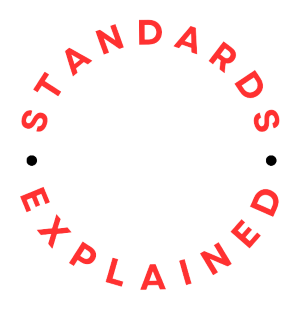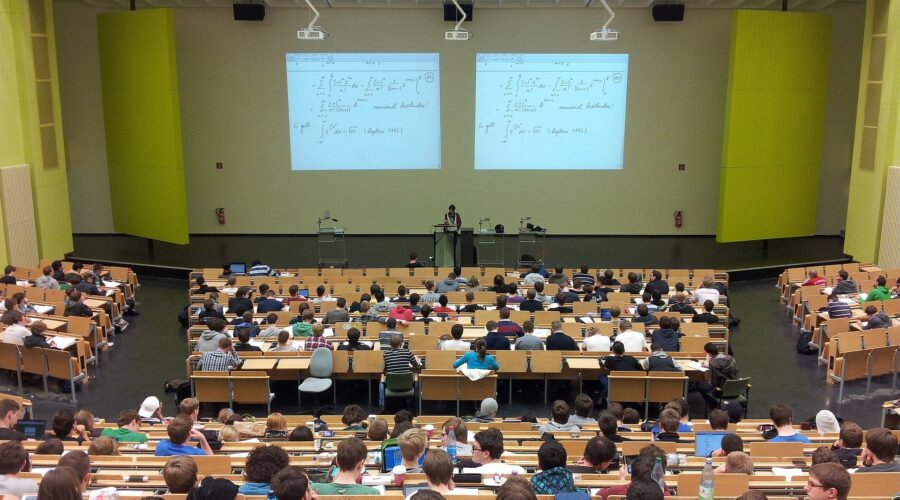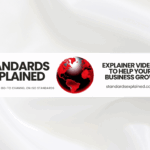ISO 21001:2018 Educational organizations — Management systems for educational organizations — Requirements with guidance for use is the international standard for Educational Organizations Management Systems (EOMS). It specifies requirements for a an EOMS when such an organization:
- needs to demonstrate its ability to support the acquisition and development of competence through teaching, learning or research;
- aims to enhance the satisfaction of learners, staff and other stakeholders through the effective application of its EOMS, including processes for improvement and assurance of conformity to the needs of learners and other beneficiaries.
All requirements of the standard are generic and applicable to any organization that uses a curriculum to support the development of competence through teaching, learning or research, regardless of the type, size or method of delivery.
ISO 21001 can be applied to educational organizations within larger organizations whose core business is not education, such as professional training departments. The standard does not, however, apply to organizations that produce or manufacture educational products only.
What does it cover?
| Introduction |
| 1 Scope |
| 2 Normative references |
| 3 Terms and definitions |
| 4 Context of the organization |
| 4.1 Understanding the organization and its context |
| 4.2 Understanding the needs and expectations of interested parties |
| 4.3 Determining the scope of the management system for educational organizations |
| 4.4 Management system for educational organizations (EOMS) |
| 5 Leadership |
| 5.1 Leadership and commitment |
| 5.2 Policy |
| 5.3 Organizational roles, responsibilities and authorities |
| 6 Planning |
| 6.1 Actions to address risks and opportunities |
| 6.2 Educational organization objectives and planning to achieve them |
| 6.3 Planning of changes |
| 7 Support |
| 7.1 Resources |
| 7.2 Competence |
| 7.3 Awareness |
| 7.4 Communication |
| 7.5 Documented information |
| 8 Operation |
| 8.1 Operational planning and control |
| 8.2 Requirements for the educational products and services |
| 8.3 Design and development of the educational products and services |
| 8.4 Control of externally provided processes, products and services |
| 8.5 Delivery of the educational products and services |
| 8.6 Release of the educational products and services |
| 8.7 Control of the educational nonconforming outputs |
| 9 Performance evaluation |
| 9.1 Monitoring, measurement, analysis and evaluation |
| 9.2 Internal audit |
| 9.3 Management review |
| 10 Improvement |
| 10.1 Nonconformity and corrective action |
| 10.2 Continual improvement |
| 10.3 Opportunities for improvement |
| Annex A Additional requirements for early childhood education |
| A.1 General |
| A.2 Principles |
| A.3 Facilities |
| A.4 Competence |
| A.5 Communication |
| A.6 Individual learning plans |
| A.7 Reception and delivery of the child |
| A.8 Hygiene care |
| A.9 Care in situation of illness or accident |
| A.10 Pedagogical-playful materials, equipment and spaces |
| A.11 Behaviour management and prevention of child abuse and negligence |
| Annex B Principles for an EOMS |
| B.1 Focus on learners and other beneficiaries |
| B.2 Visionary leadership |
| B.3 Engagement of people |
| B.4 Process approach |
| B.5 Improvement |
| B.6 Evidence-based decisions |
| B.7 Relationship management |
| B.8 Social responsibility |
| B.9 Accessibility and equity |
| B.10 Ethical conduct in education |
| B.11 Data security and protection |
| Annex C Classification of interested parties in educational organizations |
| Annex D Guidelines for communication with interested parties |
| D.1 General |
| D.2 Levels of engagement |
| D.3 Methods of engagement and communications |
| D.4 Frequency of communication with interested parties |
| D.5 Receipt and handling feedback from interested parties |
| D.6 Review of impact of feedback from interested parties on the management system |
| Annex E Processes, measures and tools in educational organizations |
| E.1 Processes |
| E.2 Measures |
| E.3 Tools |
| Annex F Example of mapping to regional standards |
| Annex G Health and safety considerations for educational organizations |
Implementation
Implementing a management system in educational organizations in conformity with ISO 21001 involves several steps.
Leadership and Commitment
- Obtain leadership commitment and support for the implementation of the educational management system.
- Establish a clear policy and objectives for education.
Scope and Context
- Define the scope of the educational management system, including the boundaries and applicability.
- Understand the external and internal context of the organization and how it can affect educational management.
Stakeholder Engagement
Identify and engage relevant stakeholders, considering their needs and expectations in relation to education.
Educational Management System Planning
Develop a detailed plan for implementing the educational management system, considering resources, roles, responsibilities, and timelines.
Risk Management
- Conduct a risk assessment to identify and assess risks associated with education.
- Develop strategies to address and mitigate identified risks.
Educational Policy and Objectives
- Establish an educational policy that aligns with the organization’s objectives.
- Set measurable objectives that support the policy.
Organizational Structure, Roles and Responsibilities
- Define the organizational structure for educational management.
- Allocate roles and responsibilities to ensure effective implementation and maintenance of the system.
Competence and Training
- Identify the competencies required for personnel involved in education.
- Develop and implement training programs to ensure personnel have the necessary skills.
Communication
Establish effective communication processes within the organization, ensuring that relevant information is shared among stakeholders.
Documentation and Information Management
- Develop and maintain documentation that supports the educational management system.
- Implement information management processes to ensure data integrity and accessibility.
Learning Environment
- Define and create a positive learning environment that supports the educational objectives.
- Consider factors such as infrastructure, resources, and student support services.
Student Admission and Support
- Establish processes for student admission and support.
- Ensure that students receive appropriate guidance and support throughout their educational journey.
Teaching and Learning Process
- Define and implement effective teaching and learning processes.
- Consider methodologies, resources, and assessment methods.
Evaluation and Assessment
- Establish processes for evaluating and assessing student performance.
- Ensure that assessment methods are fair, transparent, and aligned with educational objectives.
Continual Improvement
- Implement processes for continual improvement of the educational management system.
- Conduct regular evaluations and reviews to identify opportunities for improvement.
Legal and Other Requirements
Identify and ensure compliance with relevant legal and other requirements related to education.
Implementation of Changes
- Develop a process for managing changes to the educational management system.
- Ensure that changes are implemented in a controlled manner.
Management Review
Conduct regular management reviews to assess the performance of the educational management system and identify opportunities for improvement.
External Audits and Certification
Prepare for and undergo external audits by certification bodies, if seeking ISO 21001 certification.
Documentation and Record Keeping
Establish processes for document control and record keeping to demonstrate compliance with ISO 21001 requirements.
In conclusion…
Remember, the implementation of an educational management system is an ongoing process and so the organization should continually monitor, evaluate, and improve their systems to ensure they remain effective and aligned with the organization’s educational objectives.
ISO 21001 can be purchased through the ISO.org website.














Comments (0)